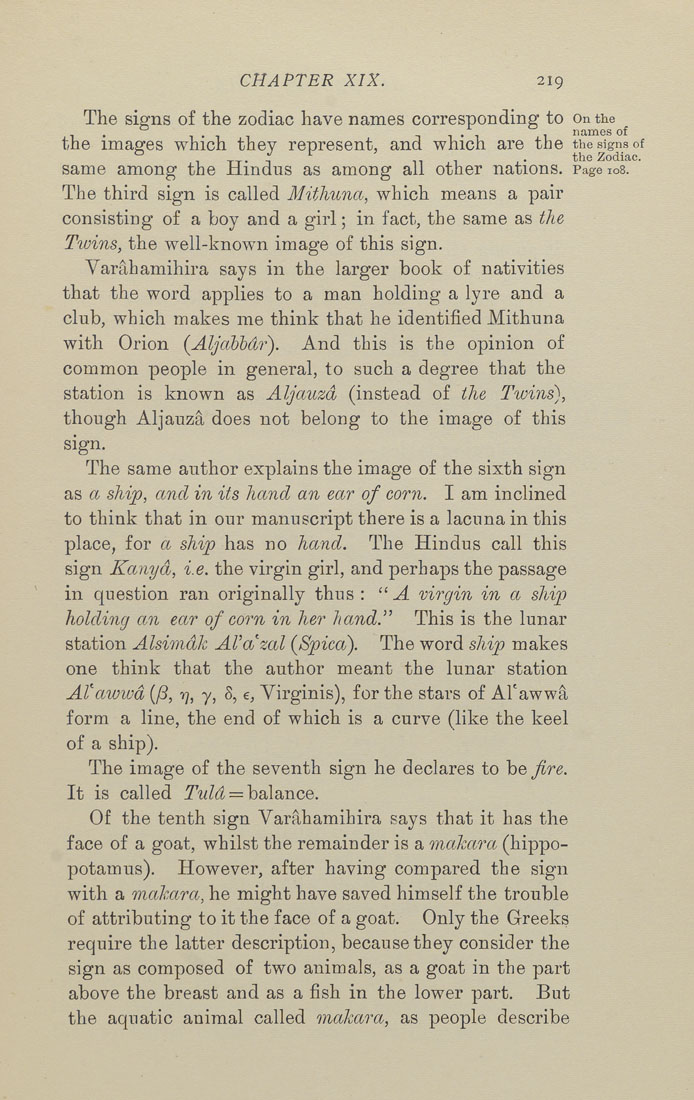Bīrūnī, Muḥammad ibn Aḥmad, Alberuni's India (v. 1)
(London : Kegan Paul, Trench, Trübner & Co., 1910.)
|
||
|
|
|
|
| Page 219 |

CHAPTER XIX. 219 The signs of the zodiac have names corresponding to on the 1 • T • T ^ -[ T • ^ ^ names of the images which thev represent, and which are the the signs of , -rx- T n 1 • the Zodiac. same among the Hindus as among all other nations. Page 108. The third sign is called Mithuna, which means a pair consisting of a boy and a girl; in fact, the same as the Twins, the well-known image of this sign. Varahamihira says in the larger book of nativities that the word applies to a man holding a lyre and a club, which makes me think that he identified Mithuna with Orion (Aljahhdr). And this is the opinion of common people in general, to such a degree that the station is known as Aljauzd (instead of the Twins), though Aljauza does not belong to the image of this sign. The same author explains the image of the sixth sign as a ship, and in its hand an ear of corn. I am inclined to think that in our manuscript there is a lacuna in this place, for ct ship has no hand. The Hindus call this sign Kanyd, i.e. the virgin girl, and perhaps the passage in question ran originally thus : '^ A virgin in a ship holding an ear of corn in her hand.''' This is the lunar station Alsimdk Al'a'zal (Spica). The word ship makes one think that the author meant the lunar station Atawwd (/?, T], y, S, e, Virginis), for the stars of Al'awwa form a line, the end of which is a curve (like the keel of a ship). The image of the seventh sign he declares to he fire. It is called Tw/c! = balance. Of the tenth sign Varahamihira says that it has the face of a goat, whilst the remainder is a makara (hippo¬ potamus). However, after having compared the sign with a makara, he might have saved himself the trouble of attributing to it the face of a goat. Only the Greeks require the latter description, because they consider the sign as composed of two animals, as a goat in the part above the breast and as a fish in the lower part. But the aquatic animal called makara, as people describe |
| Page 219 |







